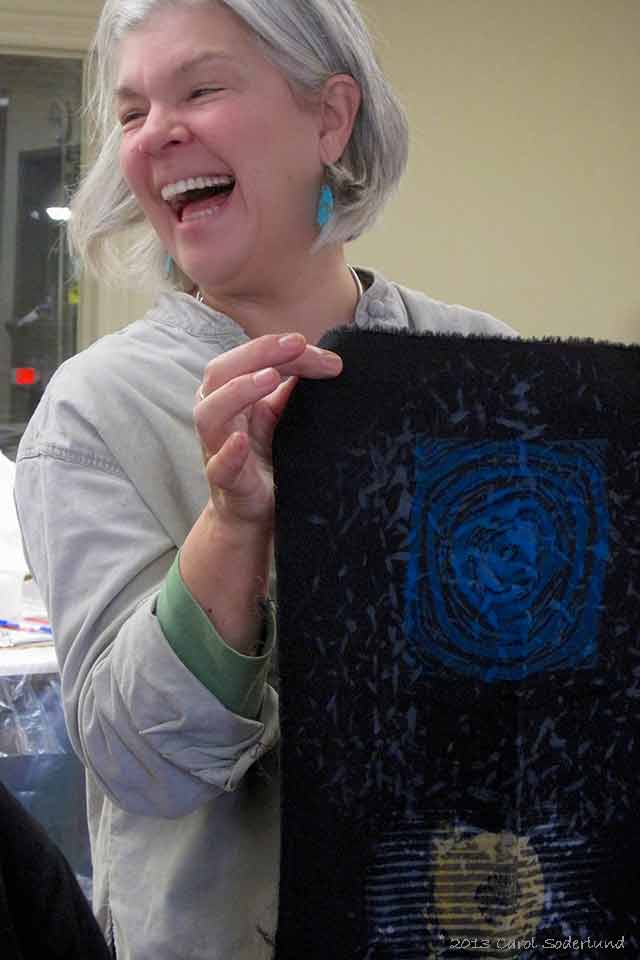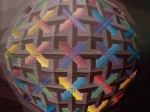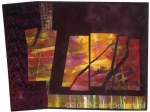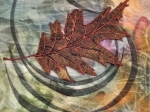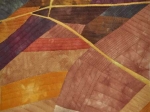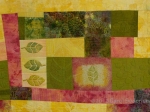The creative possibilities of removing color from cloth continue to excite me. Illumination is one of the techniques I teach in my class called Dyeing to Discharge, which I mentioned in my last post. Simply put, it is the technique of replacing color — removing color and adding another at the same time.
Above, Cindy has just done a test sample of illumination discharge in the Dyeing to Discharge class I taught a few years ago at Maiwa Handprints in Vancouver. Below are some lovely examples of student work using the technique.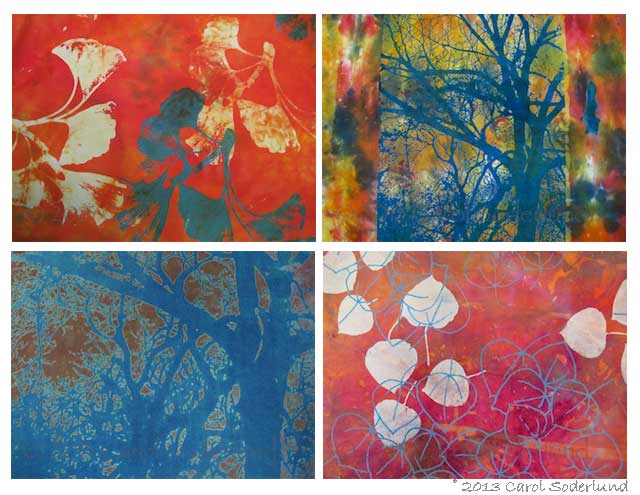
The above images were done with Thiox illumination.
A new product called deColourant came on the market a couple years ago, including a range of products with a color removal agent, and some with pigments added to replace the discharged color.
More recently I learned that there is a product called deColourant Plus Clear Mixer, to which Procion MX dye powder could be added (not pigment). The idea is that there is something in the Clear Mixer which would keep the fresh dye from being discharged with the dye already in the cloth.
I couldn’t find that anyone had done much testing with this product, and the manufacturers did not give directions for this technique, so I thought I would try it out, and compare it to Thiox paste, which is my usual go-to discharge agent.
Note: All discharge is done with very good ventilation and wearing a respirator while heating the chemicals.
I ran the Illumination tests on a bright yellow and on a grayed dark blue cloth, both hand-dyed. 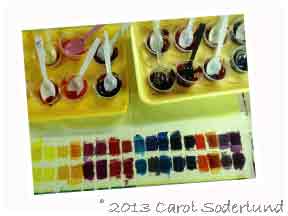
First, I made sure that these fabrics were dischargeable with deColourant Plus and with Thiox paste.Then (while wearing a dust mask, of course) I mixed dye powder into the deColourant Plus Clear Mixer and also into the Thiox paste. I used all the Procion MX pure colors to test the illumination. I used 1 to 4 ratio for dye powder to discharge paste. In other words, in 1 teaspoon of discharge paste, I mixed 1/4 teaspoon of dye powder.
I used deColourant Plus Clear Mixer as it came out of the jar. Thiox comes as a powder than you mix into a discharge paste yourself. This allows you to control the strength of the discharge paste. So I made two Thiox pastes, one stronger and one my usual strength.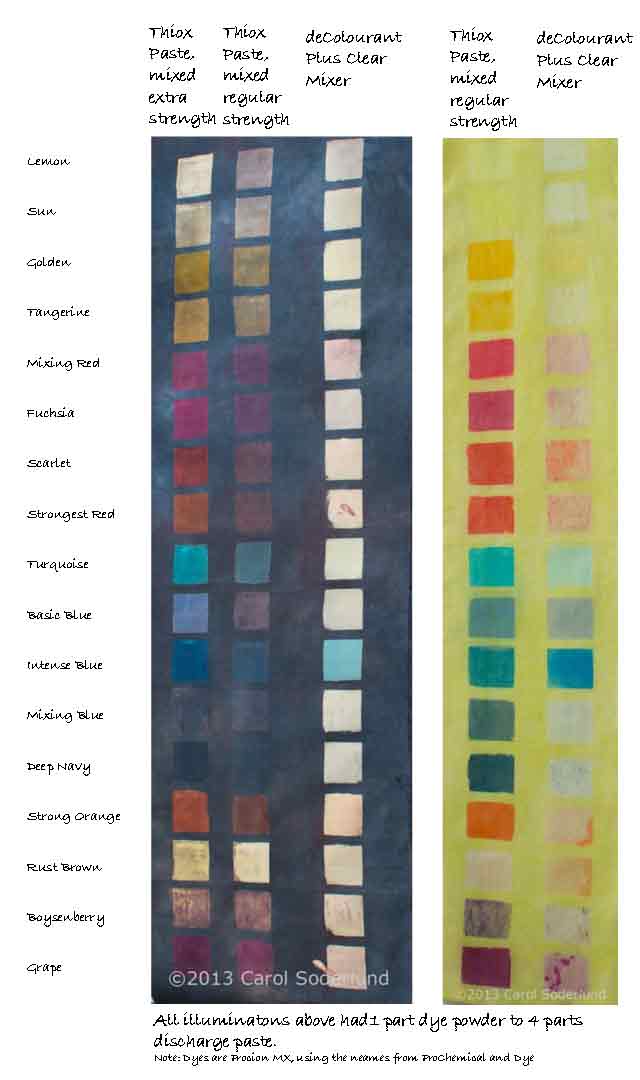
As you can see in the above photo, the deColourant discharged really well, better than the weaker of the Thiox pastes I made.
However, the dye added to the Thiox pastes illuminated better. So I decided to try the test again, using twice as much dye powder, to see if the deColourant would illuminate better if I used more dye.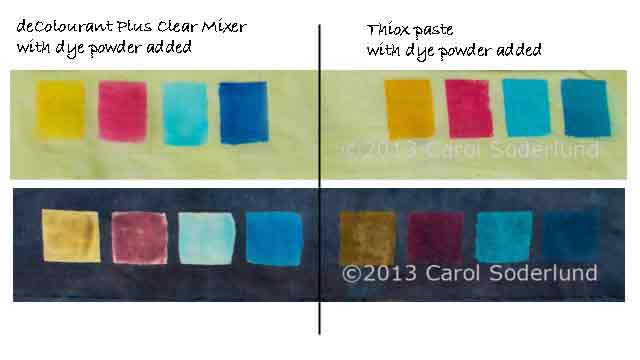
When I ran the test again, doubling the dye powder, I felt the amount of dye powder I used was really quite a lot, at one part powder to two parts paste, and the resulting paste was very thick. I didn’t thin it with water, but I might do that if I try it again. This time, though, I got quite a lot of discharge and illumination from the deColourant, as well as from the Thiox paste.
All in all, it was a fun test to try, and and I have a better idea of how to use the products going forward.
